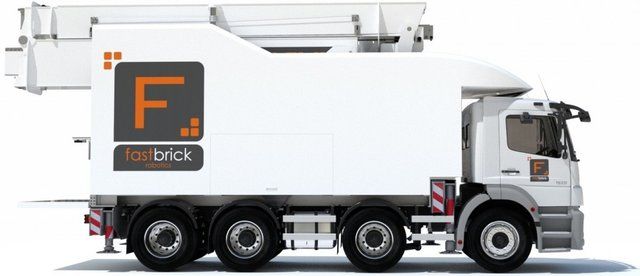Additive manufacturing, known more popularly as 3D printing, looks poised to change the automotive industry in a big, big way. But the tech isn’t just limited to cars – it can also be used in the construction of houses. One of the pioneers in this space is Fastbrick Robotics, an Australian-based technology company that came up with the Hadrian X construction system. In the company’s own words, the system offers “fully automated end-to-end 3D printing construction,” essentially creating a house brick by brick, layer by layer, in a fast, accurate, highly efficient, and totally automated fashion. Using 3D modeling and custom software, the Hadrian X system promises to totally revolutionize the construction industry.
“We can better manage bill of materials and waste and we can allow builders to investigate the possibility of cutting six or eight weeks off the standard time of construction for a residential home,” says Fastbrick Robotics CEO Michael Pivac.
The Hadrian X project is looking quite promising, having already proven its worth using the Hadrian 105 prototype to construct a small, brick-based home.
Rather than building a house in the traditional manner (as in wall by wall), the Hadrian system constructs the house layer by layer. This includes both internal and external walls, using an extendable boom that rotates around the entirety of the building as it lays each brick.
“We’re really at a nexus now where the technologies required to complete this task are available,” says Mark Pivac, Chief Technical Officer at Fastbrick Robotics. “We’ve demonstrated that it can be done.”
Continue reading for the full story.
Why It Matters
Fastbrick says this technology has the potential to completely change the way houses are “designed, made, bought, and delivered,” and after watching the prototype construct a house in a time lapse video, I believe it. This thing can put together a house like it’s a big Lego set.
The system utilizes modern bricks and adhesives, rather than mortar, which in turn improves sound and thermal insulation, and thus reduces heating and cooling costs. Using specific bricks for each section of the house, the channels needed to incorporate wiring and plumbing are pre-installed and ready to go. What’s more, the finishing touches, such as the doorframes and windows, are completed off-site as the bricks are laid, then carted over and fitted once the walls are up.
Not only is the system fast, but thanks to a laser tracker and a self-leveling arm that lays the bricks, the placement is highly accurate as well. The brick laying mechanism can even stay level if the boom is moving around, such as if it’s windy.
This makes me think about all the possibilities associated with automated systems like this. Even the design could become automated. For example, using a formula and AI program, one could conceivably come up with infinite permutations of a certain kind of home. All you’d need to do is input a few parameters (three bedroom, two bath, two story, two car garage, set on a particular space), then hit go. From all the different arrangements, buyers could pick and choose their favorite.
Of course, this translates into similar possibilities in the car world. Local Motors is already exploring 3D-printed cars, and lots of big thinkers are projecting additive manufacturing to make vehicles more customized and more accessible.
Imagine printing out a new bumper if you get in a fender bender, or maybe printing up some new wheels if you wanna change your car’s look. The possibilities are nearly limitless.
But like any technology, you’ve gotta consider the drawbacks as well. Putting the power of manufacturing into the hands of consumers will surely put a lot of people out of work, and its possible that shoddy, untested designs will begin to creep into the market.
What do you think about this tech? Is it exciting, or scary? Let us know in the comments.


